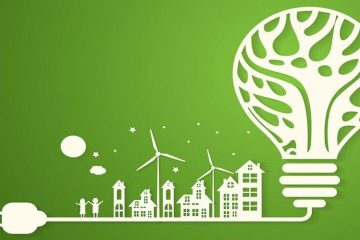Table of Contents
- Understanding the Importance of Energy Efficiency Month
- Strategies to Reduce Energy Consumption at Home
- Innovative Technologies for Enhanced Energy Efficiency
- Community Initiatives Promoting Sustainable Practices
- Tips for Businesses to Implement Energy Efficiency Measures
- Q&A
- In Conclusion
Understanding the Importance of Energy Efficiency Month
Energy Efficiency Month serves as a critical reminder of the role that energy conservation plays in our daily lives and the health of our planet. As individuals and organizations, it’s essential to recognize that every action counts when it comes to reducing energy consumption. Awareness is the first step; understanding what energy efficiency entails allows us to make informed decisions that can lead to substantial savings—both financially and environmentally. By embracing efficient practices, we contribute to lowering greenhouse gas emissions, which is vital in combatting climate change.
Many simple changes can yield significant results, not just during this month but throughout the year. For instance, consider making these adjustments:
- Switching to LED lighting for lower energy use and longer lifespan.
- Investing in Energy Star appliances that meet strict efficiency guidelines.
- Sealing air leaks in your home to improve heating and cooling efficiency.
- Utilizing programmable thermostats to optimize energy consumption based on occupancy.
In addition to individual efforts, businesses play a vital role in enhancing energy efficiency. Major strides can be made by implementing comprehensive energy management strategies. Companies can conduct energy audits, invest in renewable energy sources, and foster a culture of sustainability among employees. The following table illustrates various energy-saving suggestions that businesses can adopt:
| Energy-Saving Strategy | Potential Savings |
|---|---|
| Regular Equipment Maintenance | Up to 10% savings |
| Upgrading HVAC systems | 20–30% savings |
| Implementing a Telecommuting Policy | Up to 15% savings |
| Employee Training on Energy Practices | 5–10% savings |
Every action taken during Energy Efficiency Month—and beyond—signals a collective commitment to a sustainable future. By fostering an environment where energy-efficient solutions are prioritized, we set a powerful example for future generations. The way we approach energy consumption today has lasting implications, reinforcing the necessity of integrating efficiency into our lifestyles and operational philosophies.


Strategies to Reduce Energy Consumption at Home
Improving your home’s energy efficiency is a practical way to reduce environmental impact and lower utility bills. Start by conducting an energy audit to identify areas where your home may be wasting energy. This can be as simple as checking for drafts around windows and doors or as thorough as hiring a professional auditor. Once you pinpoint energy leaks, you can take steps to seal them, such as using weatherstripping or caulk to prevent heat loss in colder months.
Another effective strategy is to invest in smart home technology. Smart thermostats, for example, learn your preferences and adjust the temperature accordingly, significantly reducing energy usage when you’re not home. Additionally, consider upgrading to energy-efficient appliances, which utilize advanced technology to consume less electricity. Look for products bearing the ENERGY STAR label, which signifies that they meet strict efficiency guidelines.
Lighting also plays a crucial role in energy consumption. Replacing incandescent bulbs with LED alternatives can dramatically reduce energy usage, as LEDs consume up to 80% less electricity. To go a step further, consider installing motion sensors or dimmers, which help ensure that lights are only on when needed. By combining these efforts, you can create a home that is not only more energy-efficient but also contributes positively to the environment.
| Action | Benefit |
|---|---|
| Conduct energy audit | Identify energy leaks |
| Invest in smart technology | Optimize energy use |
| Switch to LED lighting | Reduce electricity consumption |


Innovative Technologies for Enhanced Energy Efficiency
As we delve into the realm of energy efficiency, several groundbreaking innovations are reshaping how we consume and conserve energy. From smart home technologies to advanced materials, the integration of these innovations significantly reduces energy waste and optimizes usage. One key player in this transformation is the Smart Grid technology, which not only improves the reliability of energy supply but also allows for real-time monitoring and management of energy consumption by using IoT sensors. This responsiveness ensures that energy is used more efficiently and can adapt to dynamic demand patterns.
Additionally, energy-efficient appliances have seen a remarkable evolution, offering consumers an array of options that are both sustainable and cost-effective. These devices often incorporate Artificial Intelligence (AI) to learn users’ habits and optimize performance accordingly. For instance, smart thermostats can adjust heating and cooling based on occupancy and weather forecasts, ultimately leading to significant reductions in energy costs. Other examples include:
- LED Lighting: Consuming up to 80% less energy than traditional bulbs.
- Energy Star Certified Appliances: Meeting stringent efficiency criteria while performing exceptionally.
- Heat Pump Technology: Offering efficient heating and cooling by transferring heat rather than generating it.
The construction industry is also harnessing innovation to improve energy efficiency through the use of sustainable building materials and advanced insulation techniques. By employing reflective coatings and employing passive solar design, buildings can maintain comfortable temperatures without excessive heating or cooling. The following table illustrates some common materials and their energy-saving benefits:
| Material | Energy Efficiency Benefit |
|---|---|
| Insulated Concrete Forms (ICFs) | Improved thermal resistance, reducing heating/cooling demands. |
| Cool Roofs | Reflect sunlight, lowering energy costs for air conditioning. |
| High-Performance Windows | Minimize heat loss in winter and heat gain in summer. |
By embracing these innovative technologies and materials, not only can we enhance energy efficiency, but we can also contribute to a more sustainable future. Each improvement, no matter how small, aids in reducing the overall carbon footprint and promoting responsible energy consumption.


Community Initiatives Promoting Sustainable Practices
Across the globe, communities are coming together to implement sustainable practices that not only reduce energy consumption but also promote a healthier environment. Local organizations, schools, and businesses are taking the lead in fostering energy-efficient habits that resonate deeply within their neighborhoods. From educational workshops to community challenges, these initiatives are empowering individuals to make a tangible difference in their energy footprints.
One effective approach has been the development of community gardens, which encourage residents to grow their own produce. These gardens not only promote local food sourcing but also foster a sense of community. Participants learn eco-friendly gardening techniques and water conservation methods, significantly lowering their environmental impact. In addition, communal spaces often incorporate solar-powered lights and rainwater harvesting systems, showcasing practical applications of energy efficiency.
Another innovative initiative involves local businesses partnering with residents to create energy action plans. These plans typically include goals such as reducing overall electricity use by a certain percentage, implementing renewable energy sources, and achieving measurable waste reduction. Communities often host informational sessions where citizens can learn about energy audits, rebates for energy-efficient appliances, and smart technology that assists in monitoring energy use. Here’s an example of how such a plan can be structured:
| Initiative | Description | Expected Outcome |
|---|---|---|
| Energy Audits | Assessing home energy use to identify waste | 20% reduction in energy use |
| Solar Group Purchase | Bulk buying solar panels for discounts | Increased solar adoption by 30% |
| Efficient Appliance Workshops | Training on choosing and using Energy Star appliances | Lower power bills for households |


Tips for Businesses to Implement Energy Efficiency Measures
Implementing energy efficiency measures is not just about reducing costs; it’s also a vital step towards enhancing sustainability. First, conducting an energy audit can help businesses identify areas where energy is being wasted. This thorough examination often reveals inefficiencies in lighting, heating, and cooling systems. Consider partnering with energy consultants who can provide tailored recommendations for your specific operational needs.
Next, switch to energy-efficient appliances and technology. For instance, using LED lighting instead of traditional incandescent bulbs can significantly decrease energy consumption. Additionally, consider investing in smart thermostats that allow for better temperature control and scheduling, optimizing energy usage during non-peak hours. Here’s a brief comparison of conventional vs. energy-efficient alternatives:
| Type | Energy Consumption (per year) | Lasting Duration |
|---|---|---|
| Incandescent Bulb | 100-200 kWh | 1,000 hours |
| LED Bulb | 10-20 kWh | 25,000 hours |
Lastly, fostering an energy-efficient culture within the organization is essential. Engage employees by promoting awareness about energy conservation. Simple actions like turning off unused equipment or minimizing the use of heating and air conditioning when not needed can collectively lead to meaningful savings. Organizing workshops or campaigns during energy efficiency month can motivate staff and reinforce the commitment to sustainable practices across the board.
Q&A
Energy Efficiency Month: Q&A
Q1: What is Energy Efficiency Month? A1: Energy Efficiency Month is celebrated every October to promote the benefits of energy conservation. It’s a time when individuals, businesses, and communities come together to raise awareness about the importance of using energy wisely. The goal is to encourage practices that reduce energy waste, lower energy bills, and minimize our impact on the environment.Q2: Why is energy efficiency important? A2: Energy efficiency is crucial for several reasons. Firstly, it helps to reduce energy consumption, which in turn reduces greenhouse gas emissions that contribute to climate change. Secondly, by improving energy efficiency, individuals and businesses can save money on energy bills. Additionally, promoting energy efficiency leads to greater energy security and a reliance on sustainable practices.
Q3: How can I participate in Energy Efficiency Month? A3: Participating in Energy Efficiency Month is easy and can be done in various ways. Start by conducting an energy audit of your home or workplace to identify areas for improvement. Switch to energy-efficient appliances, use LED lighting, and implement practices like turning off lights when not in use. You can also share your efforts on social media to inspire others to join you in making a difference!
Q4: Are there any local events related to Energy Efficiency Month? A4: Many communities host events during Energy Efficiency Month, including workshops, seminars, and informational sessions. You can check with local government websites, environmental groups, or energy providers for information on events in your area. Participating in these gatherings can provide valuable insights and resources on energy-saving practices.
Q5: What is the role of government in Energy Efficiency Month? A5: Governments play a significant role in promoting Energy Efficiency Month by providing resources, incentives, and programs aimed at improving energy efficiency across all sectors. They may offer rebates for energy-efficient appliances, grant funding for retrofitting buildings, or set energy standards to encourage sustainable practices. By taking initiative, government entities help drive awareness and action among consumers and businesses.
Q6: What are some small changes I can make for greater energy efficiency? A6: Small changes can lead to significant impacts! Consider using smart power strips to reduce phantom energy loads, unplugging devices when not in use, or adjusting your thermostat to save on heating and cooling. Additionally, regular maintenance of HVAC systems and caulking windows can dramatically improve energy efficiency in your home. Every little action counts!
Q7: How can businesses benefit from energy efficiency? A7: Businesses, much like individuals, can reap numerous benefits from energy efficiency. By implementing energy-efficient solutions, companies can significantly reduce operational costs, enhance productivity, and improve their public image. Moreover, energy-efficient buildings often attract customers and tenants who value sustainability, leading to increased business opportunities.
As Energy Efficiency Month approaches, take a moment to reflect on how your energy habits contribute to a sustainable future. With a collective effort, we can brighten our planet and save on costs while doing so!




0 Comments